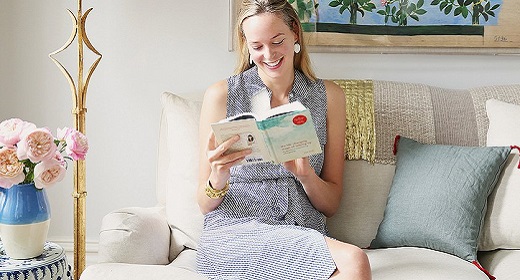I’d heard about Marie Kondo, a Japanese organizing consultant, from friends who spoke evangelically about her methods and how they’d transformed their lives…
In case you haven’t, here’s the gist: with her little turquoise book, The Life-Changing Magic of Tidying Up: The Japanese Art of Decluttering and Organizing, Kondo set off a decluttering craze across the globe.
Kondo’s services command a waiting list a mile long in Japan, but for the rest of us, her book breaks down her radical, two-pronged approach to tidying. First, put your hands on everything you own, ask yourself if it sparks joy, and if it doesn’t, thank it for its service and get rid of it. Second, once only your most joy-giving belongings remain, put every item in a place where it’s visible, accessible, and easy to grab and then put back. Only then, Kondo says, will you have reached the nirvana of housekeeping, and never have to clean again.
All of this sounded wonderful. But as a working mother I can barely keep up with the demands of daily life (laundry! groceries! deadlines!). But once I read Kondo’s book, I got totally sucked in. It turns out, tidying really may be the way to bliss. Here’s what I learned.
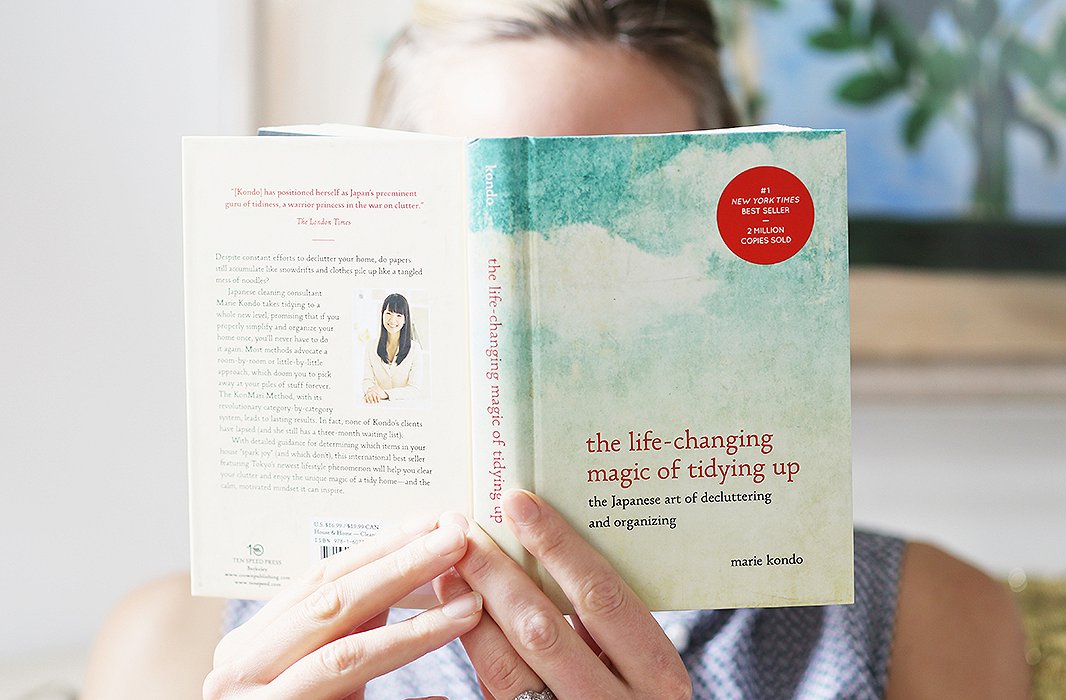
Lesson #1: Tackle Categories, Not Rooms
I’d always tackled clutter by room—take on the office first, the bedroom next. Instead, Kondo’s first rule is to tidy by category—deal with every single one of your books at once, for example, otherwise they’ll continue to creep from room to room, and you’ll never rein in the clutter. She advises beginning with clothing, since it’s the least emotionally loaded of one’s things (books come next, old photographs are much later), so as soon as I found a free afternoon, that’s exactly what I did.
Lesson #2: Respect Your Belongings
With my eyes now open, I realized my closets had hit rock bottom. Everything had succumbed to a mixed-up messiness. Kondo asks that you consider your clothing’s feelings: Are they happy being squashed in a corner shelf or crowded onto hangers? Are your hardworking socks really thrilled to be balled up? It had sounded out there when I read it, but suddenly my clothes looked totally miserable.

Getting nostalgic over old letters or distracted by sweet toddlers might be a temporary high, but it won’t get you anywhere fast.
Lesson #3: Nostalgia Is Not Your Friend
As I started emptying the closets, I opened boxes filled with letters and old photographs. Serious mistake. Kondo knows what she’s talking about when she insists you put blinders on and focus only on the category of stuff at hand. Read one old letter, and suddenly you’re down a rabbit hole of nostalgia.
To be honest, I was probably procrastinating. In theory, I was sold on the idea of living exclusively with clothing that gives me joy, but I still had hang-ups: What will I be left with? Will I have anything to wear to work? Will I have to sacrifice beloved things, all for the sake of decluttering?
Then my 18-month-old son, Henry, wandered in, and there’s nothing he loves more than recluttering. The afternoon was basically lost. If you do this, don’t waste time like I did (and maybe book a babysitter for this project).
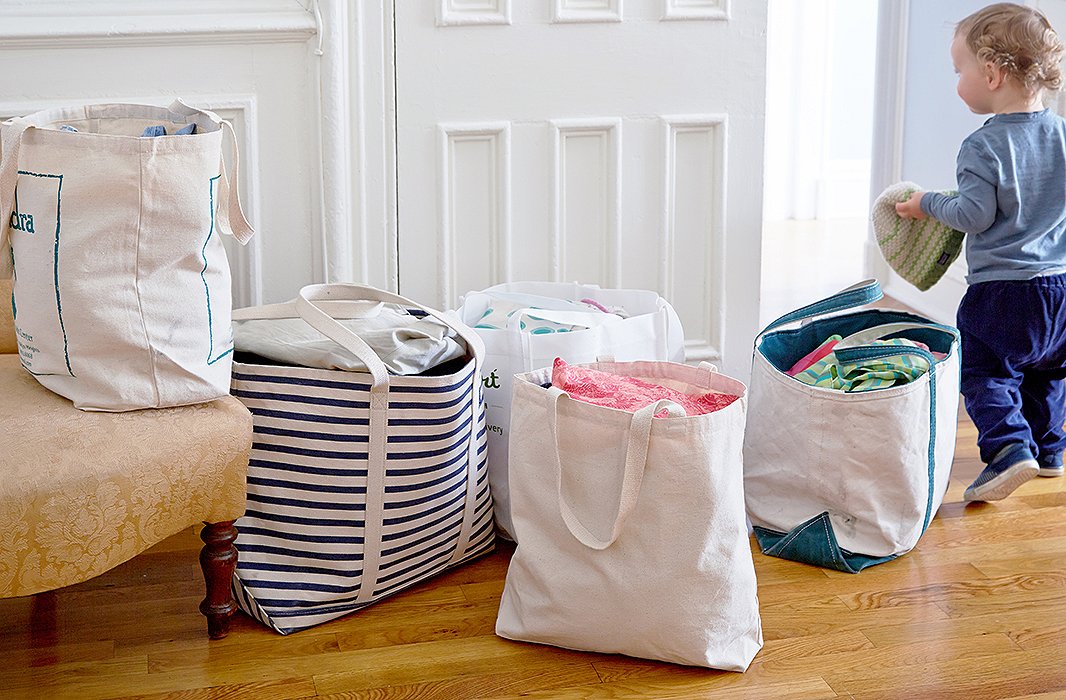
Kondo warns that you shouldn’t show your family the discard bags, since they’ll want to stop you from getting rid of so much. Case in point: Henry tried to nab an old hat.
Lesson #4: Purging Feels SO Good
From then on, I followed Kondo’s advice to a T. I gathered every piece of my clothing and put it in one giant pile. While I normally tidy my clothes only when I’m on a long phone call—distracted from the task at hand—today I wasn’t even supposed to listen to music. Channeling Kondo, who says a prayer upon entering a client’s home, I lit a candle, said a little prayer, and started digging through the mountain of clothes.
Once I got to work, it was so much easier and more fun than I’d thought. This question of joy gives you permission to let go of off-color shirts bought on sale, dresses past their prime, skirts that always clung uncomfortably. I realized I had many things that seemed great in theory but weren’t actually my style—they’d be better on someone else’s body or in someone else’s life (examples: an überpreppy skirt or a corporate-looking jacket).
Six hours later, I’d filled 12 bags with non-joy-giving clothes. Instead of panic, I felt relief—12 times lighter. It also felt like good karma: The best stuff went to a consignment shop, and the decent stuff went to a charity thrift store, off to see a new, hopefully better life.
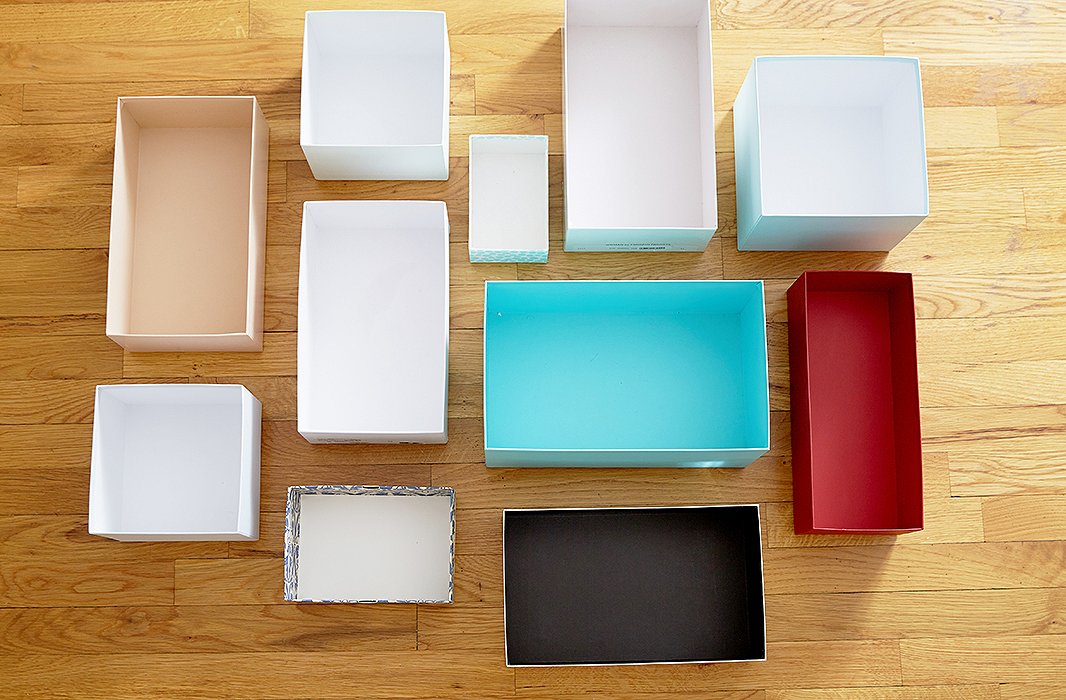
While she doesn’t go for the classic storage pieces, Kondo loves a good shoebox (or any pretty box you have tucked away) for its all-purpose organizing power.
Lesson #5: Fold, Don’t Hang
Once you’ve sorted out the things to discard—and only then—you can decide where the remaining things should go. Rather than folded in a cubby or hanging in a closet, Kondo thinks a lot of our clothing would be better off (or as she’d say, happier) folded in a dresser.
I hadn’t been using a dresser at all before, but now, having begun with four overflowing closets, I was down to enough clothing to fill one closet and one dresser. Pulling from the tops, pants, and scarves now destined for the dresser, I started folding using Kondo’s special technique.
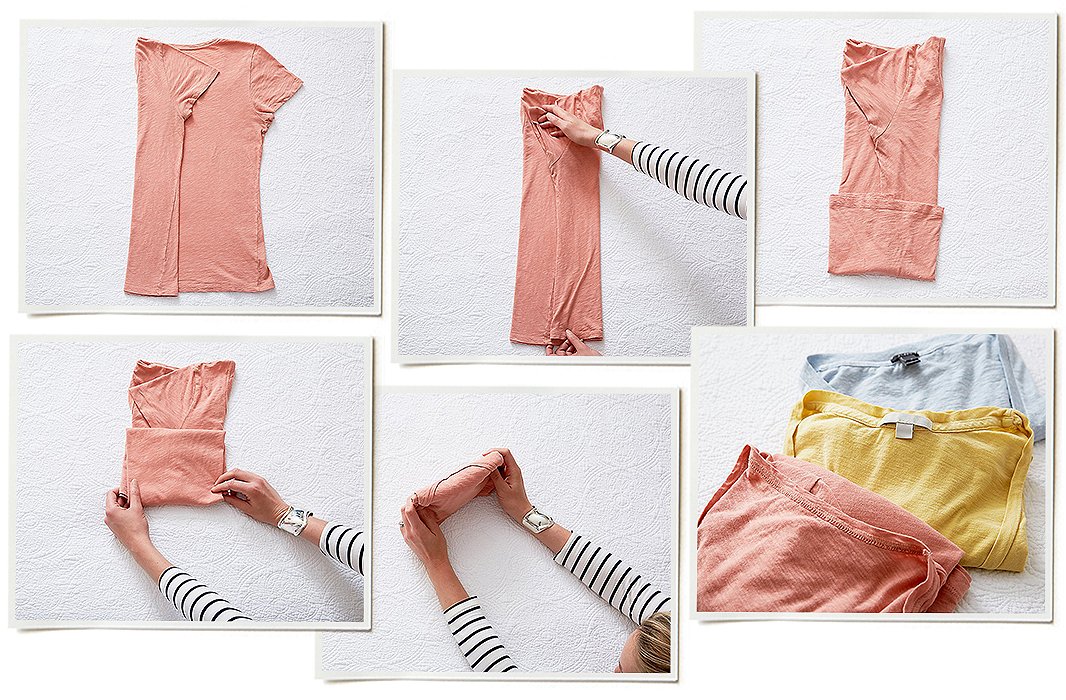
Here’s the basic KonMari vertical fold, which can be applied to everything from T-shirts to stockings. First, make a long rectangle, and then fold from the bottom up into a little package.
Lesson #6: THE Fold!
Kondo’s vertical folding technique makes everything easy to spot and hard to mess up (you aren’t jostling a whole pile every time you take something out or put something back). Folded this way, clothing looks like fabric origami, ready to line your drawers in neat rows.
To keep these little folded packages standing at attention in the dresser, Kondo suggests using shoeboxes as drawer dividers. A smaller box is perfect for square scarves, a deep one can go on a bottom drawer for sweaters.
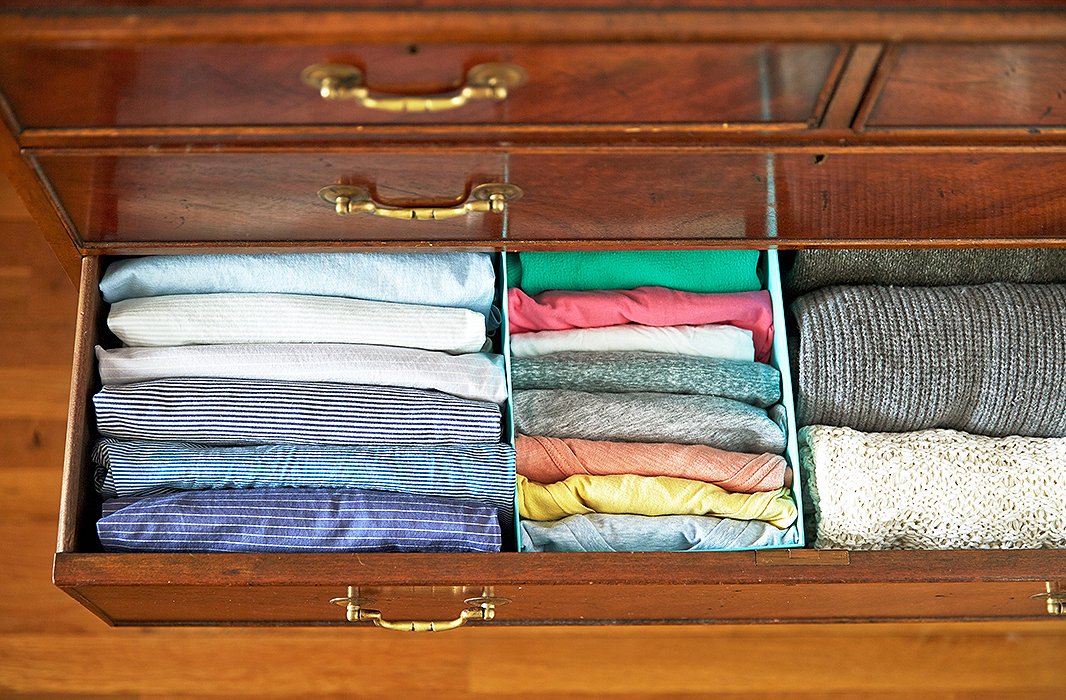
The dresser install, using a few shoeboxes. I even folded some of my husband’s striped shirts (on the left), just to inspire him to try this in his own drawers.

Kondo advises hanging clothes so that the line along the bottom slopes upward—it adds an optimistic zing.
Lesson #7: Fall in Love with Your Closet
This is why people become evangelical about the KonMari method. Once you’ve cleared away the clutter and put things away, your dresses and skirts—the fun stuff, let’s be honest—can see the light of day. There’s breathing room between pieces, so you no longer have to do that awkward arm wrestle with the racks. All of which means you get a hit of joy—even hope!—just opening your closet, whether you’re getting ready in the morning or planning a party ensemble.
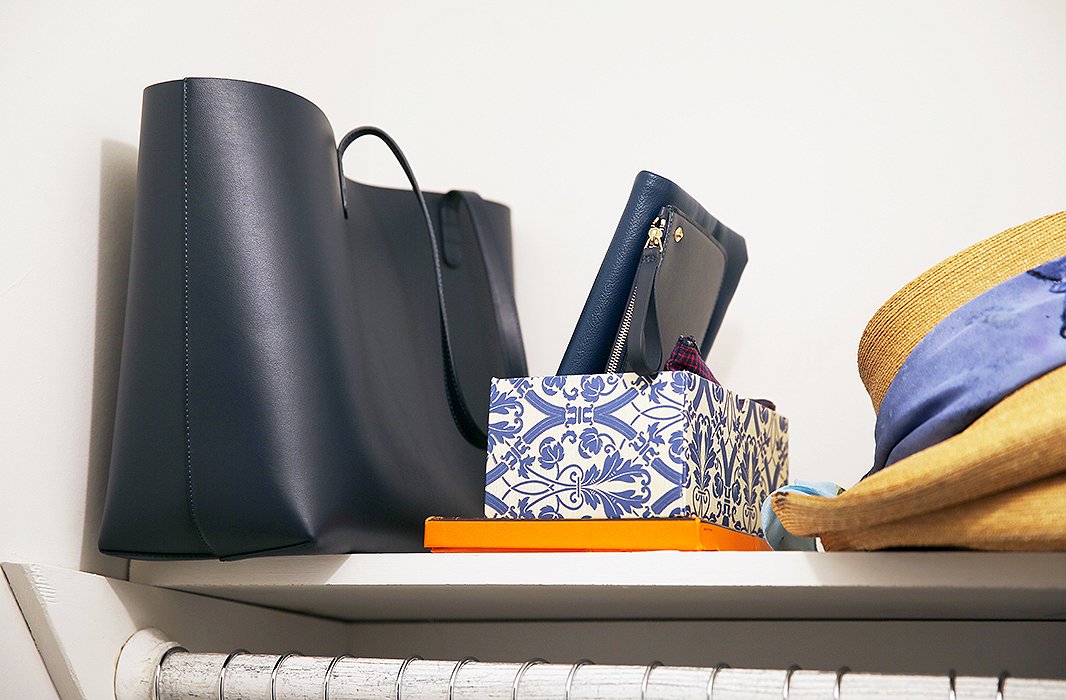
My bag in its proper resting place, alongside a little damask-covered box that holds a few clutches, making them visible and easy to grab when running out the door.
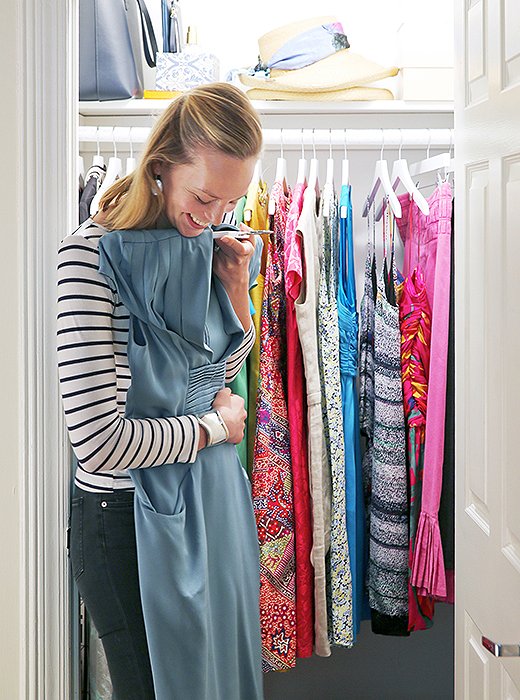
Three dresses that bring lots of joy—a vintage Mexican dress, an architectural silk number, and a swirling polka-dot piece from a nutty great-aunt.
Lesson #8: Rediscover Your Style
For years, I’ve worn the same rotation of easy-to-grab, reliable pieces without dipping into all the color in my closets. And there’s a lot of it—maybe because I grew up near the ocean, I have a weakness for turquoise and pink and love a color mash-up and summertime prints. I’d almost forgotten about these colors in the daily race to get out the door.
My Six Favorite Results, A Month Later
#1 Getting dressed is no longer a chore. Digging through an overstuffed closet was painful. Now my closet feels richer, loaded up with good things that I’ll get a little thrill from wearing, whether it’s while riding the subway or dancing at a wedding.
#2 I’ve identified the true holes in my wardrobe. It turns out that I own only one pair of sandals that I love, and have no really joy-giving jeans (who does? any suggestions?). Now, instead of shopping vaguely and coming home with something I already have, I really know what to hunt for.
#3 I’m collecting things I really love. This process has made me pickier, and by not frittering away cash on so-so things, I’ve been able to make more-thrilling purchases: a bold floor-length dress, a yummy Matteo quilt I’d eyed forever, an opalescent abalone shell to hold my favorite earrings.
#4 Treating your things with respect makes them look better. And to coin a new Kondo-ism, sometimes respecting something means letting it go. My son’s babysitter took a few scarves that had been clumped in a sad pile and ties them into beautiful headscarves. The look punches up the dreariest Monday morning.
#5 Cleaning is so much easier. Yes, I still have to tidy—I’m guessing only the most devout, extreme practicers of the KonMari method will “never have to clean again.” But now that everything flows into order, the cleanups are much fewer and farther between.
#6 All sorts of decisions are falling into place. This might be the best payoff of all: Once you’ve looked at hundreds of things and asked yourself if they give you joy, decision-making gets a lot easier: which book to read, which projects to pursue, what to make for dinner, whether to say yes or no to the many optional obligations that come our way.
I can’t wait to tackle category two: the books. Just waiting for another spare afternoon.

I love having books everywhere—reading is my favorite way to Zen out and get happily lost. But I’ll be glad to make room for.
Source: One Kings Lane







